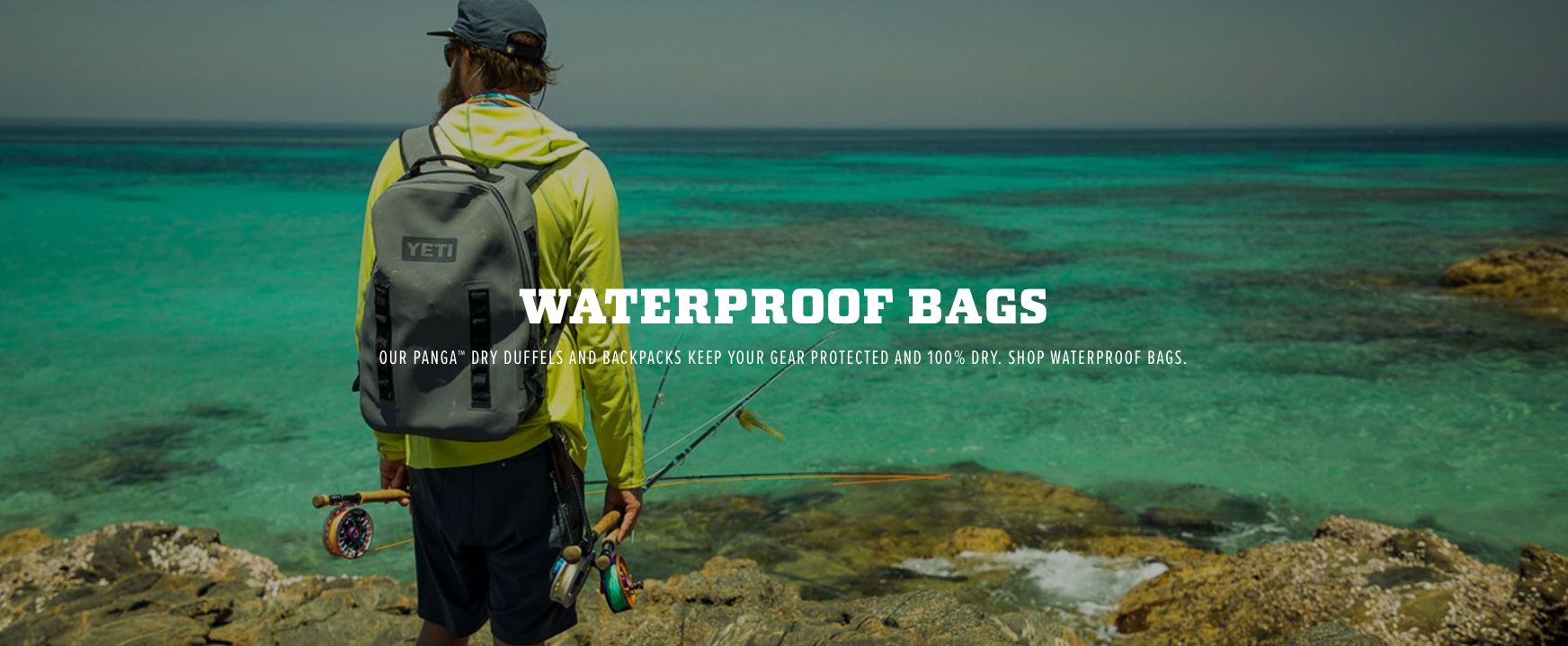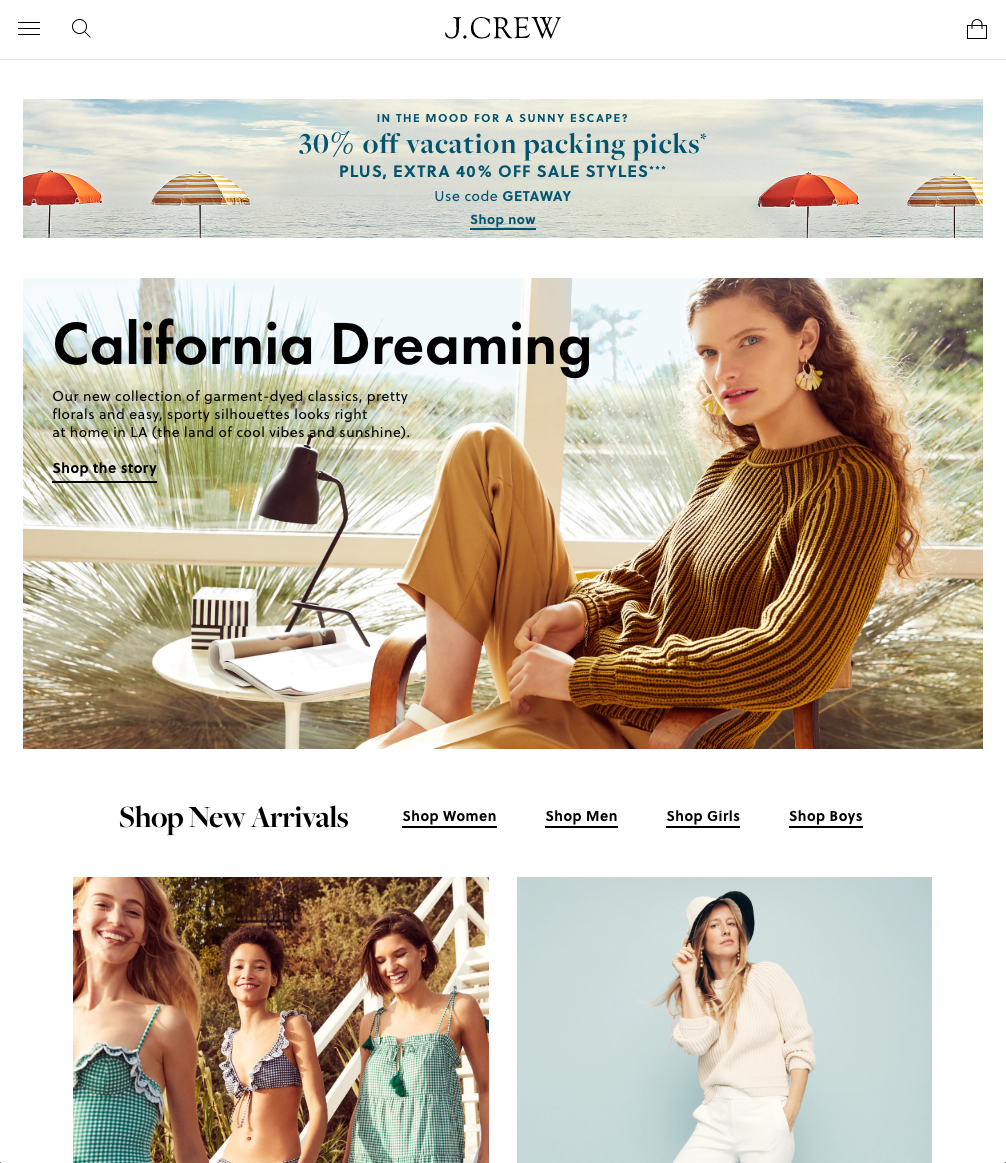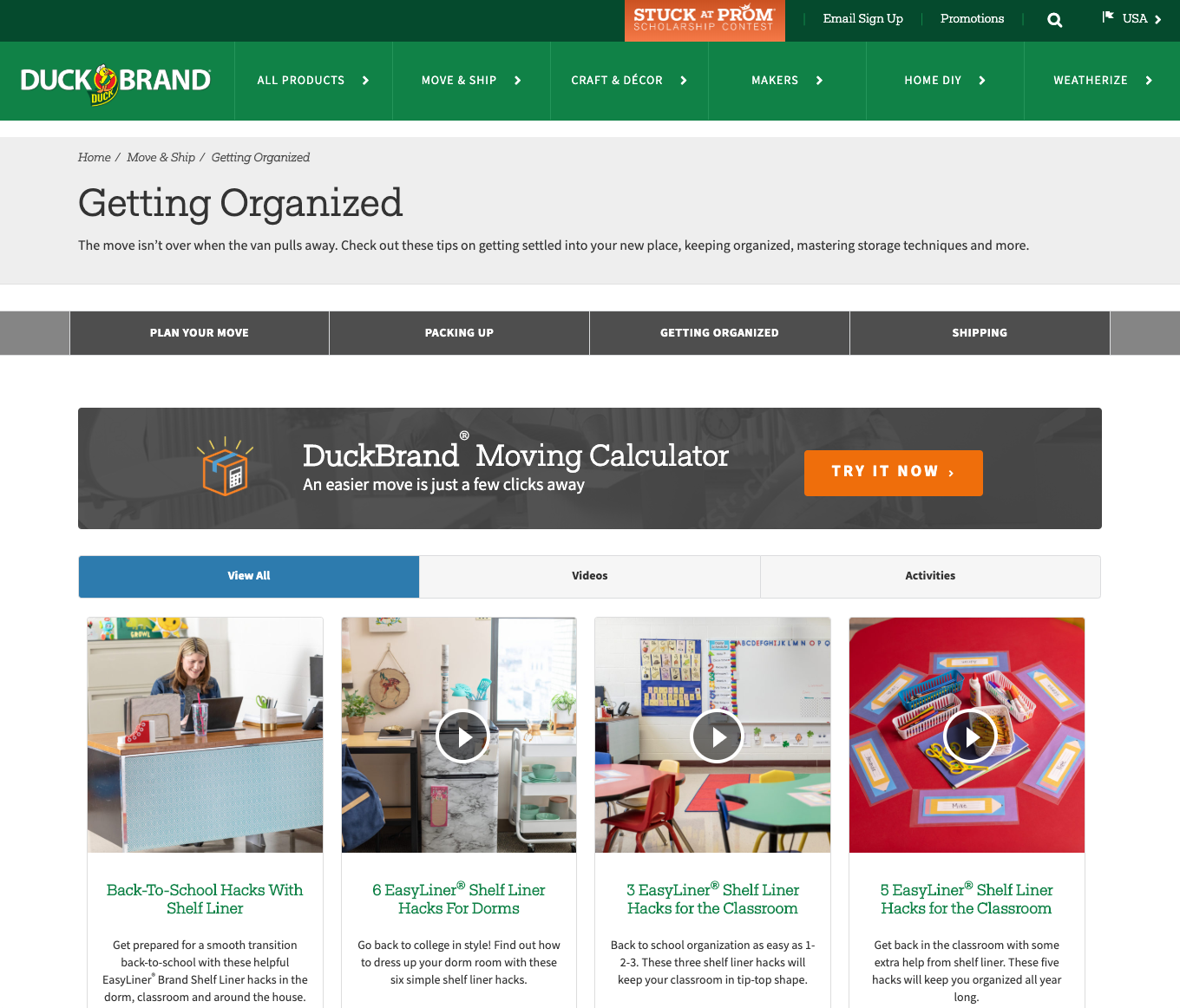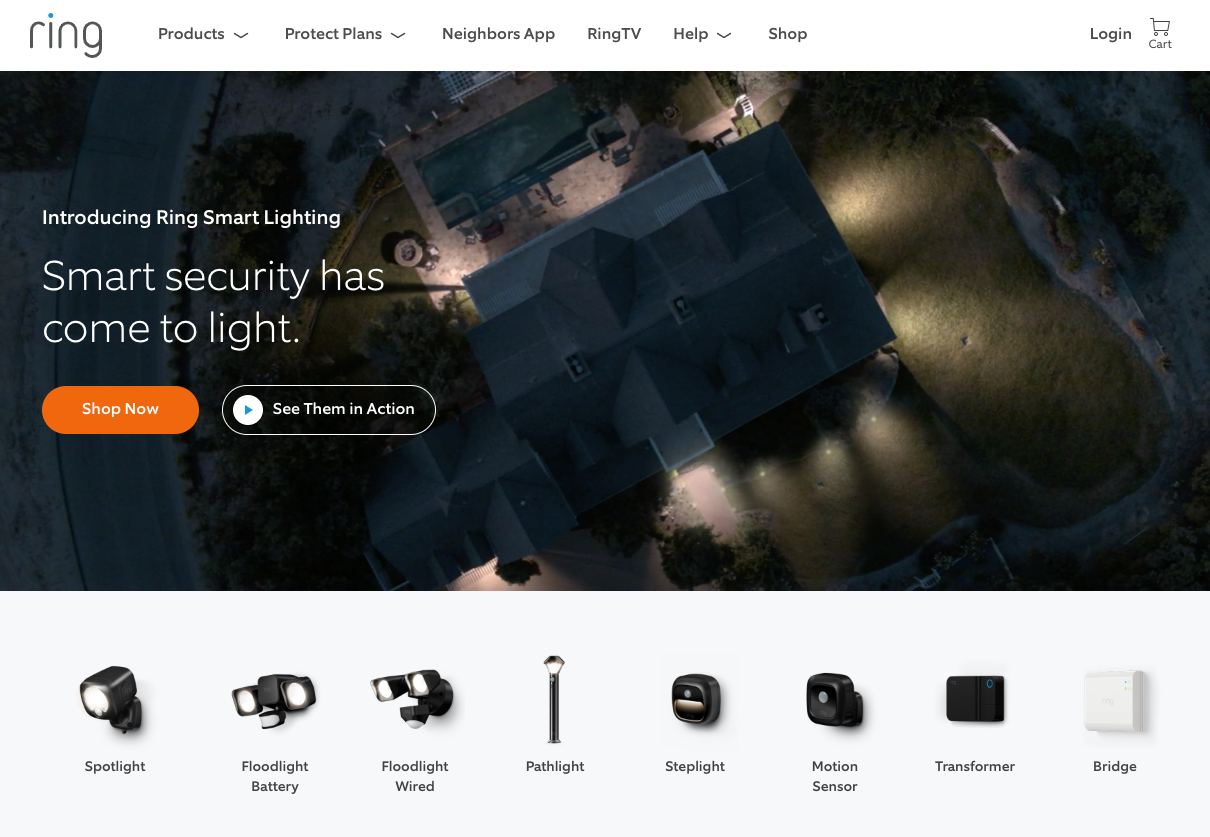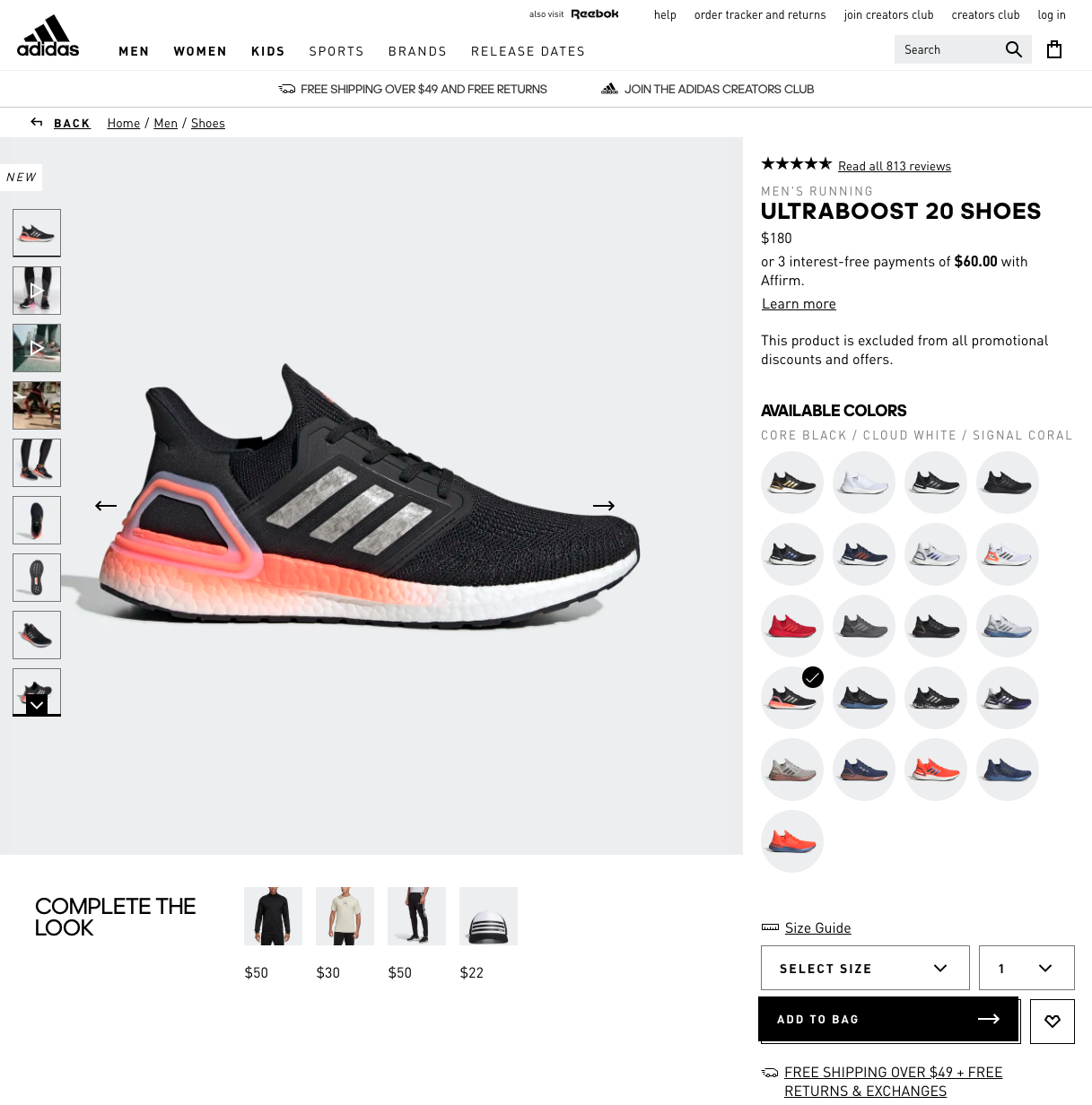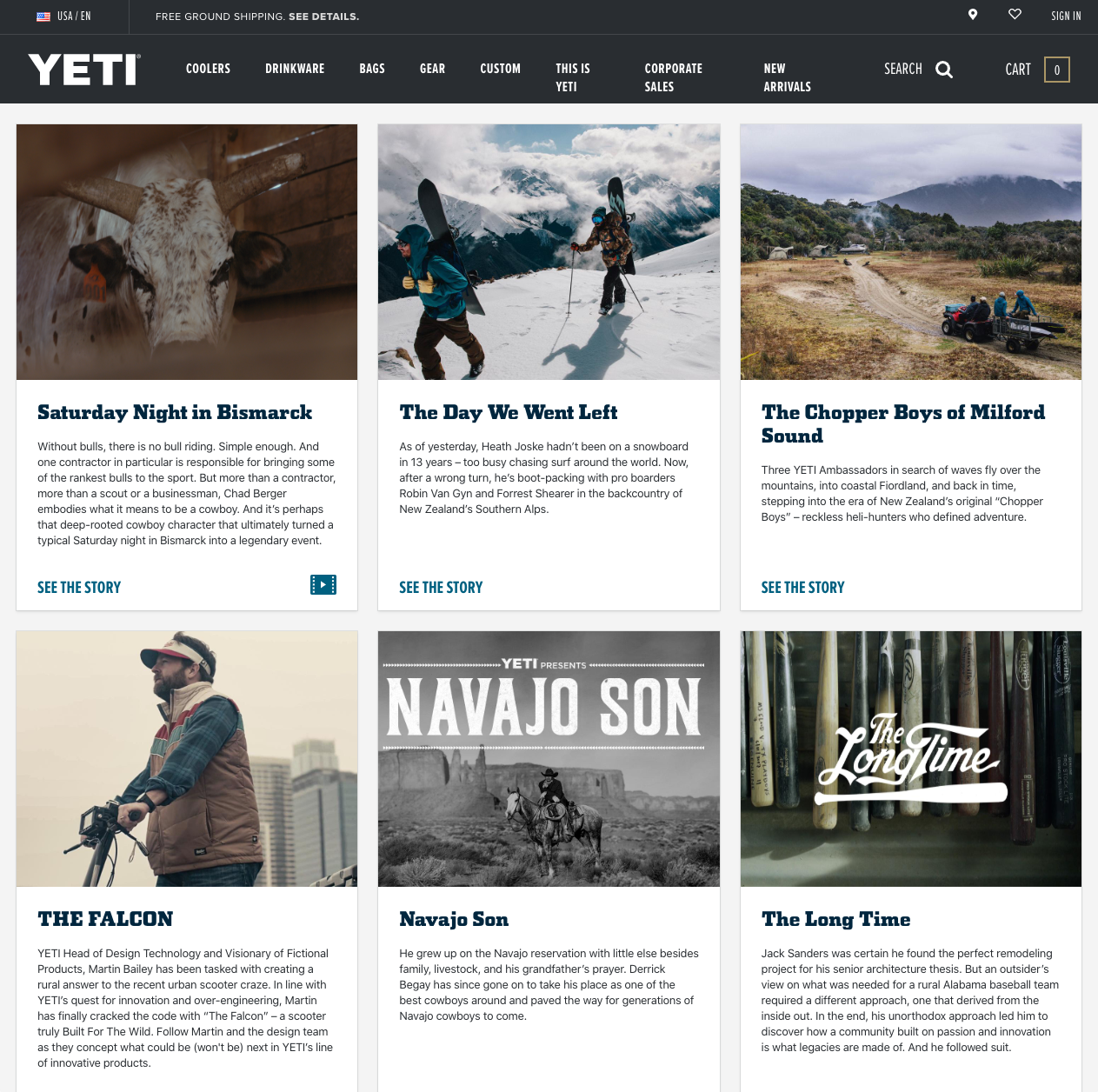Use Brand Story to Build Customer Loyalty
Customer loyalty is earned by telling a brand story that emotionally resonates with your customers. We all have our favorite brands in fashion, technology, food, cars, etc. In this article we’ll break down what makes customers loyal to a brand, how you can position your own brand to earn that loyalty, and how to improve the design of your e-commerce store to capitalize on it.

Introduction
Customer loyalty is earned by telling a brand story that emotionally resonates with your customers. We all have our favorite brands in fashion, technology, food, cars, etc. In this article we’ll break down what makes customers loyal to a brand, how you can position your own brand to earn that loyalty, and how to improve the design of your e-commerce store to capitalize on it.
This is the same approach we’ve used with large multinational food brands, banks, hospital systems, housewares manufacturers and more. Each brand has its own unique story to tell, but the approach to telling the story remains the same.
One of the most important overarching themes to consider is the difference between brand loyalty and product satisfaction.
Up through the 1990’s, having a killer product was enough to earn brand loyalty. In brick and mortar stores, product demand would drive customers into your store to browse. While doing so, they would be immersed in the brand’s story through the carefully designed environment they were surrounded in.
In today's digital channels, those stories have become more difficult for marketers to tell. The customer is no longer surrounded by the culture of a physical store. Rather, the store is just a tab in a browser full of other tabs in the middle of an uncontrollable environment.
As digital marketing has matured, many new mediums have been created to provide rich customer experiences. These new digital channels include streaming video, podcasts, social media and blogs and all provide engaging opportunities to showcase your brand’s story. Alas, these digital mediums are commonly used to promote products. And while that’s an important piece of digital marketing, it’s secondary to connecting your brand story with your target audience.
This gap creates a great competitive advantage for your company to develop relationships with new customers. To succeed, connect with your target audience through your brand story, earn their loyalty, and force your competitors to either respond or settle for less.
Direct to Consumer vs. Online Marketplaces
There are two ways people shop online. They either buy from you directly through your e-commerce store, or they buy through an online marketplace. Both of these create valuable opportunities for you, but the Direct to Consumer (D2C) channel is where customer loyalty is earned.
Marketplaces
The brands we work with tend to have a love/hate relationship with marketplaces like Walmart, Amazon, Wayfair, Home Depot and others. On one hand, those marketplaces drive a high volume of sales, but on the other hand, those sales come with slim margins and stiff competition.
Marketplaces are built for sales transactions. Their businesses thrive when they show products competitively. In order to show endless variety, they display your product side by side with your competitors’ products. If you have better reviews, better prices, and better photos, you’ll win the sale.
But when it comes to winning loyalty, marketplaces don’t fare so well. Have you ever bought something from Amazon that you loved, but couldn’t remember who made it? That’s the tradeoff you make when selling on marketplaces. You made the sale, but didn’t create a customer.
To make matters worse, these marketplaces look at the data of their most successful products and use it provide insights to your competitors or even to launch their own competing products. For example, look at AmazonBasic's. Amazon created an in-house brand of products which are designed to steal market share for themselves by using insights learned from your brand’s products.
Direct-To-Consumer
These marketplaces have to design their websites around product capabilities in order to show competing products side by side. As such, they cannot adequately represent the story behind your brand. As a result, Amazon has immense customer loyalty to its marketplace, but their customers are not loyal to the brands they purchase from on the platform.
That’s because purchasing a product on the marketplace is not a memorable experience. Actually, it’s an intentionally unremarkable experience. It’s neutral and impersonal by design.
On your own direct-to-consumer website, you have the opportunity to really connect with your audience and present your products to a specific target persona in the context of your story. If done well, your customers will see themselves as part of your story. They will personally connect with you on your company values and buy from you emotionally; almost as if they were a member of your family.
Copying Marketplaces is a Mistake
Through our experience of analyzing hundreds of brand retail e-commerce websites, we’ve learned that brands commonly look to online marketplaces for inspiration when designing their direct-to-consumer online stores. This is a huge mistake, as it ignores your biggest opportunity - telling your story.
E-commerce platforms like Shopify, Magento, BigCommerce and others come preconfigured to work like Amazon. Marketing agencies work from pre-defined wireframes and templates based on generic capabilities.
Following that flawed approach, the best you can do is be an alternative option to buying on a marketplace. Even with the same photos, prices and terms, why would a customer register on your website and buy from you when they could do the same with one-click on Amazon and get Prime shipping? It’s nearly impossible to compete on the basis of the transaction alone.
A better approach is to design a bespoke shopping experience for your target audience and turn that experience into a relationship you can nurture into a loyal customer.
How to Tell Your Brand Story
Your brand story is not about you. Rather, it’s about telling a story that will relate to the people you are selling to so they connect their own wants and needs with your brand. At The Refinery, we ask ourselves, “Can our customers see themselves in our website, content and messaging?”
As a brand marketer, you already know the importance of defining your target audience as personas. Personas help you segment your marketing efforts to specific people and connect with them using a familiar voice, tone and relatable imagery.
These same personas should be the inspiration for the hero of the story you tell. It’s critical that you don’t position yourself as the hero in your story, but rather position yourself as the guide to a solution your customer’s needs.
By putting intentional thought and research into defining your persona, you’ll get a better understanding of the journey your customer is on. As such, you can seamlessly insert yourself as a guide into their journey.
Yeti’s mission is at the heart of their marketing:
We founded YETI Coolers with a simple mission: build the hard cooler we’d use every day if it existed.
With one simple image, it’s clear that the hero of the story is a rugged dude loving life in the outdoors. It’s a lifestyle for tough guys.
Note that Yeti lets that hero story shine. They don’t steal the spotlight, but rather they shine it back on the customer.
Yeti is still part of the story, though. They are the trusted companion that goes along on that journey.
Image source: yeti.com.
Tell Your Story Across Channels
Make your story “sticky” by relaying it across all of your channels, from your website, to traditional print marketing, TV/Radio advertising, and on social media. The more channels you tell this same story, the more opportunities you create to remind your customers that you are on their journey with them.
Further, put your story in the hands of your fans so they can continue to tell it on your behalf. If done well, your customers will be walking billboards for your products. People at a campground that see another family with Yeti products will feel a connection to them. They are on the same journey and interactions reinforce Yeti’s brand.
Beyond that, consider putting your products in the hands of influencers. It’s remarkable how much of a personal connection people have to the influencers they follow on social media. If those influencers are part of the same story, you can sponsor them to include your product in their posts.
When surveyed, consumers validate the importance of brand story and how it correlates to their interest in becoming a customer:
Source: Headstream. Percentages do not add up to 100 because the question allowed multiple answers.
Customer Loyalty
There are several factors to consider when designing your e-commerce store to build customer loyalty.
Customer Relationship: The purpose of the brand story we’ve focused on so much in this article is to establish and nurture a meaningful relationship with the customer. That story establishes the beginning of the relationship, which is later earned by your customer service. Loyalty happens over time, and it takes consistency and attention to deliver. To build loyalty, make sure that you pay close attention to each touch point you have with a customer, marketing events, product delivery and customer support.
Product is a Good Value: No amount of loyalty will sell a product that is priced too high. To build loyalty, your customer needs to be comfortable with the longtime financial commitment required.
A few years ago we studied a new premium dog food. They told the story of healthy pets making their owners happier and ran some amazing campaigns. But the product was so expensive they couldn’t retain customers for the long term. Despite a story with amazing pull, they couldn’t earn the loyalty.
Product is of Acceptable Quality: Your product doesn’t have to be the highest quality product on the market. My wife much prefers her $15 Target purses over designer handbags. But to earn a long term customer, they have to feel like they’ve gotten their money's worth meaning the price the quality exceeded what their expectations.
Purchasing is Convenient: To earn ongoing sales, the product needs to be easy to purchase and convenient to renew. This should go without saying, but some brands make it remarkably hard to buy.
Understanding Customer Intent
Not all visitors to your website are ready to buy. And while that’s true of all e-commerce strategies, it’s especially true when building customer loyalty. When you build a compelling brand story, you’ll be attracting visitors to your website who don’t know what your products are. They’ll be attracted to your message -- interested in content you’ve published that speaks to them.
Browsing Intent
Building a brand with a loyal customer following means there will be plenty of opportunities to interact with that customer. Browsing products can be an entertaining endeavor for many people, even without the intent to buy immediately. It’s okay; these interactions all put deposits into the loyalty bank that lead to purchases and referrals down the road.
When I was a young boy, my grandfather and I would go down to the local car dealer to admire the new cars coming off the lot. As a result, I learned to appreciate the cars I saw on the road. When a member of my family bought a new car, I was the first to explore it. Even today, 35 year later, that car brand is still the first place I look for a new car. I even find myself killing time browsing the local dealership when I’m not in the market for a car.
Buying Intent
Time to put bread on the table! We’ve been nurturing our target audience with stories, great content, and inspiring lifestyle imagery. The customer is ready to go and visits the website to make a purchase.
This is the critical moment. In our research, we surveyed customers to understand why they didn’t buy after visiting a website with the intent to purchase. The results showed two clear reasons:
- Shipping costs aren’t disclosed: Amazon Prime’s 2 day free shipping is not a luxury anymore. Everyone expects it. Advertise your shipping policy on the product detail page. Do not wait to show shipping prices until after products are added to the cart.
- Product reviews are missing, fake, or concerning: In brick and mortar stores, we can pick up a product, feel the quality and make a buying judgement based on that. But online, we rely on the opinions of others who purchased before us. Never game or censor your reviews, but do everything you can to encourage people to post them.
Design Considerations
Up to this point we’ve talked about core principles behind building customer loyalty. Let’s turn now to how we specifically apply those principles to the design of each section of your e-commerce store.
Homepage
Put simply, the goal of the homepage is to guide users to the information or products they are looking for. For our target customers, we want them to take one glance at the imagery on the homepage and instinctively realize that this place was built for them; that our brand story is compelling to them. The next step for them is to go deeper into our content and into browsing intent.
Content Pages - Blogs and Stories
The purpose of the homepage is to give the story at a glance. Blog posts and engaging content are how you give the story more detail. No matter the type of content you are creating, make it unique, purposeful and entertaining to both read and share, all while pushing your story forward.
Product Category Pages
Product categories are how we connect products to the story. At the category level, the stories become more specific. For example, the overall brand story for a cosmetics company may be about sustainable, cruelty-free products. But at the category level, that story becomes directly applicable to curly hair, plump lips or clear skin. Use lifestyle photos of the products in action and link to product detail pages so that users can explore each product at a deeper level. Doing so anchors your brand as a solution to a specific problem that your customer has and starts to shift them into buying intent.
Product Detail Pages
Product detail pages are one of the only places on your website where the story is of secondary importance. The rest of the website has used your brand story to drive people to this product page so they can learn more and possibly convert. By the time people reach this page, assuming they are in your target audience, they should be considering making a purchase at some point in the near future.
The purpose of the product detail page is to educate the customer about the specifications and functions of the product as well as reinforce its quality using customer reviews. While you should reinforce the brand story with lifestyle imagery, your main job is to make people confident that the product in front of them is the one they should buy or help them navigate to another that's more relevant.
Learn more about the essential components of your product detail pages.
Persona Landing Pages
On the persona landing page, you share a tailored version of the story for a person with a particular interest or demographic. As an example, a cell phone company may have an overall story as a luxury brand, but sell to both business travelers and college students. A student would not connect with the story about a business traveler, so they might feel that the product is not a good fit for them. To combat this, we create persona detail pages that share specific stories for specific people. These pages also serve as great landing pages for targeted social advertising campaigns.
Conclusion
Take the following steps as you make improvements to your direct to consumer e-commerce website:
- Define your target audience.
- Craft a brand story that involves your customer as the hero.
- Design your website to nurture customer loyalty.
- Write and publish content to keep your story front of mind for your customers.
- Use promotions to turn browsers into buyers.
- Supplement your business by selling on marketplaces as you deem appropriate.
Lets talk about how to use brand story to improve the design of your store.
Contents
- Marketplaces
- Direct-To-Consumer
- Copying Marketplaces is a Mistake
- Example: Yeti.
- Tell Your Story Across Channels
- Browsing Intent
- Buying Intent
- Homepage
- Content Pages - Blogs and Stories
- Product Category Pages
- Product Detail Pages
- Persona Landing Pages
- Conclusion
Tags
Next Article

Safari to Limit SSL/TLS Certificate Validity to One Year
On February 19th of this year, Apple made a fairly big announcement during a face-to-face meeting of the CA/Browser Forum (CA/B Forum). This forum is where the industry standards group convenes, and it consists mainly of certificate authorities as well as several of the major browsers.
